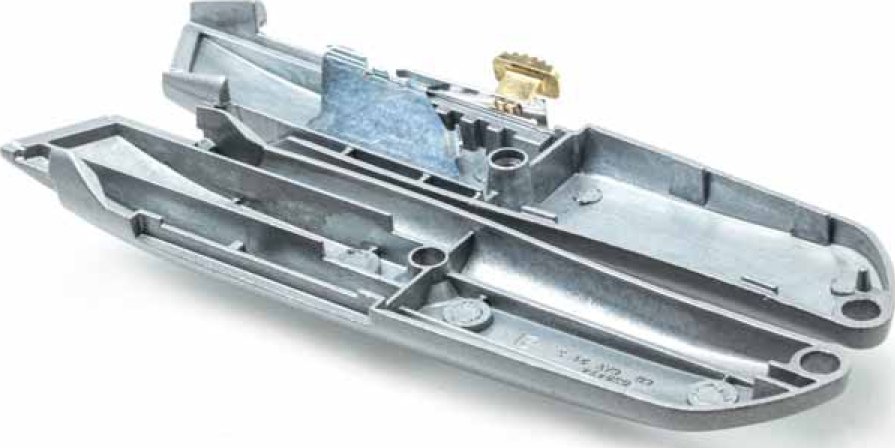Zinc lacks the personality and strong associations of many other metals, for example the premium, lightweight associations of magnesium or the luxury associated with silver. Visually it’s not that striking either, but it is still a very important material, not just in its own right but also as a partner for other metals.
Zinc alloys can be characterized as the metals most likely to be used as alternatives to plastics for making complex components. Zinc has a silvery bluegrey colour and is the third most used non-ferrous metal after aluminium and copper. According to the US Bureau of Mines, the average person will use 331 kg (730 lb) of zinc in his or her lifetime.
Its low melting point is one of the key reasons zinc is such an ideal material for casting. Zinc castings are everywhere in products that take advantage of the metal’s suitability for making detailed and complex metal parts, for example, under the skin of chromed door handles, bathroom taps and corkscrews. And apart from its use for casting, its high corrosion resistance means that one of its other primary areas of use is as a partner to steel for galvanizing. Apart from steel, another major use of zinc is as an alloy to copper for forming brass.
Image: Stanley knife casing made from zinc

Key features
•High corrosion resistance
•Alternative to plastics in forming complex parts
•Capable of good surface finish
•Low cost
•Relatively brittle
•Good hardness
•Alloys well with other metals
•Hygienic
•Low melting point
•Recyclable
Sources
Zinc is the twenty-fourth most common element on the Earth. There are zinc mines throughout the world, with the main mining areas being China, Australia and Peru. China produced 29% of the global zinc output in 2010.
Cost
£1.15 ($1.8) per kg.
Sustainability issues
According to the US Geological Survey in 2011, zinc production was at around 12,000 tons per year with current reserves at 250,000 tons. In the same year in the US around 53% of the zinc used was from recovered sources. As a material with a low melting temperature it could be argued that it has less embodied energy than high-melting-point metals.
Production
One of the main areas for processing zinc alloys is in pressure die-casting. Another new area of production that zinc can be applied to is spin casting, a method of casting small components for quick evaluation before full-scale production. In terms of applying decorative surfaces, it can be electroplated, painted and anodized.
Apart from its use in galvanizing as protection against corrosion, zinc alloy castings have been used as an alloy for producing bronze. Zinc alloys are often difficult to find in their raw state as they are often coated, for example, the ordinary kitchen corkscrew is often made from a zinc alloy, which is nickelplated. But its corrosion resistance is not just used for steel; it is also an indispensable element for our bodies, which supports our immune system.
| + | – |
|
–Low cost –Ideal for casting –Corrosion resistant –Recyclable |
–Relatively brittle –Not attractive but takes decorative finishes well |
